#the Morrígu
Text
Let's talk about The Morrígu and Sovereignty

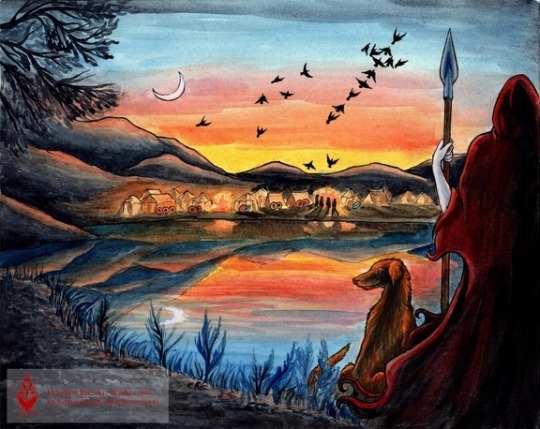

I've noticed a trend over the years among those who work with the Morrígu (especially among Americans, probably because you know 'freedom') where the word sovereignty gets thrown around a lot in some.... odd contexts...
For example "You should never worry about telling her no, she's the goddess of sovereignty she'll respect your decisions EVERYTIME!"
I've always found this very confusing since... She literally brings down her full wrath against Cu Chulainn for rejecting her advances/boons and becoming the high king (and being symbolically married to her)... wasn't a choice... the druids would preform a ceremony and receive divine visions of the future high king and I've NEVER heard of it being turned down.
So lets look at a few definitions;
First for Sovereignty
Sovereignty, though its meanings have varied across history, also has a core meaning, supreme authority within a territory. It is a modern notion of political authority. Historical variants can be understood along three dimensions — the holder of sovereignty, the absoluteness of sovereignty, and the internal and external dimensions of sovereignty. The state is the political institution in which sovereignty is embodied. An assemblage of states forms a sovereign states system.
-from Stanford Encyclopedia of Philosophy
vs. Individual Sovereignty
'sovereignty of the individual, 'individual sovereignty' or self-sovereignty is generally understood to imply one's property rights including self-ownership also called negative sovereignty, but also includes the rejection of or freedom from positive sovereignty where negative sovereignty includes property rights and positive sovereignty includes the right to subjugate people to command obedience or sovereign rule
- from Wikipedia
The concept of Individual Sovereignty (sometimes called self ownership) is primarily a legal and political philosophy that has grown out of other individualist philosophies. So it would be pretty obvious why it resonates with modern peoples (Americans especially).
Now back to The Morrígu. They are not deities of INDIVIDUAL sovereignty, but classical sovereignty. They empower the kings (high kings especially) to rule the land and are the acting forces which remove kings in the event that they don't uphold the divine expectations of their position (such as true judgments).
Don't believe me? Still thinking to yourself "yes but The Morrígu would never expect me to give up my individual sovereignty, they're empowering." In that case I won't even direct you back to the story of Cu Chulainn, instead we'll look at Macha, wife of Cruinniuc. When she is brought to the horse race, obviously pregnant and asks the king not to make her prove her husbands boasts he declines her request. If The Morrígu were interested in individual sovereignty over sovereignty this would have been a perfect moment to show that. Instead Macha does as her king demands and runs the race, but in her divine aspect she curses not just that king (for his mistreatment of those under him, ie. a pregnant woman) but also all his men and their descendents.
The idea of The Morrígu is not some super individualized empowerment allowing you to defy the authority of those around you (including the gods), the core value is one of justice for those who ARE tread on by Sovereign powers. This may feel like splitting hairs but I assure you the distinction is one worth thinking about, and possibly even changing the way you speak about The Morrígu.
photo credit: @purpureaphoto @morpheus-ravenna Cindyruch
#hooded crow#irish#irish mythology#celtic#irish paganism#irish polytheism#celtic paganism#celtic polytheism#language#paganism#na morrigu#morrigan#morrighan#na morrigna#the morrigan#Morríghan#the Morrígu#the Morríghan#Sovereignty#sovereign#individual sovereignty#individualism#blackcrowing
125 notes
·
View notes
Text
The Morrigan Deity Guide
This is a re-do in the "deity deep dive" format of my original Morrigan post!

Who is The Morrigan?
The Morrigan is the ancient Irish Triple, or tripartite, of war and death, but she is also goddess of sovereignty, the land, and prophecy.
The name Morrigan, or Morrigu, is the anglicized version of the Gaelic name Mór-Ríoghain, which means "Great Queen" in modern Irish.
The old name has been linked to the proto-indo-european word Mór (terror) and Ríoghain could relate to the Latin word Regina (queen). (Wiktionary)
It’s debated whether she is one deity with three aspects or if these three aspects are sisters that create a triple goddess.
If they are sisters, their names are likely Macha, Nemain, and The Morrigan, their collective title being The Morrigu or The Morrigna. (The spelling of these will differ throughout your research if you choose to do your own after this post)
Their names could also be Macha, Nemain, and Badb, though the name “Badb” may have been a title for spirits/gods who wrought havoc on the battlefields and incited terror in the opposing side. (See “The Ancient Irish Goddess of War” in references for more info).
Other names involved with these sisters are Anand and Fea.
It’s not unlikely that The Morrigan’s identity would change between the many different groups in Ireland throughout time.
Parents and Siblings
Her mother is Ernmas, father is unknown.
Siblings have included Ériu, Banba, and Fódla, who make up the triple goddess of spirit and sovereignty of Ireland.
As well as Gnim, Coscar, Fiacha, and Ollom, as her brothers.
Lovers or Partners
The Dagda, with whom her relationship is of great importance for the Irish holiday Samhain.
In some iterations of her lore the Morrigan falls for Irish Hero Cú Chulainn but her feelings are not returned.
Children
Mechi, who has three hearts that each contain a serpent.
Epithets
The Goddess of Death
Morrígu
The Morrighan
The Great Queen
Phantom Queen
Badb-Catha
Nightmare Queen
The Washer at the Ford
Notes
Due to the many myths and legends surrounding The Morrigan and she is also associated with the Fae and the Banshee—a creature that generally takes on the form of an old woman who wails in mourning to announce the coming death of someone in the family.
The Morrigan is most notoriously a shape shifter and deity of magic.
In modern day paganism and witchcraft, some choose to worship The Morrigan as one deity with the sisters as aspects, others choose to worship her as a triple goddess consisting of three sisters. Neither of these can be said to be entirely right or wrong and vary from person to person, even from an academic point of view.
Though there are similar beings throughout Celtic mythology, The Morrigan is unique to Irish mythology.
Stories that prominently feature the Morrígan include Táin Bó Cúailgne (The Cattle Raid of Cooley), Cath Maige Tuired (The First and Second Battles of Moytura), and Lebor Gabála Érenn (The Book of the Taking of Ireland). (Mythopedia)
Fulacht na Mór Ríoghna (Cooking Pit of the Morrígan) in County Tipperary, and two hills in County Meath known as Da Cích na Morrígna (Two Breasts of the Morrígan) are both locations in Ireland linked to The Morrigan.
Modern Deity Work
Correspondences
Disclaimer - Many of these are not traditional or historic correspondences nor do they need to be. However, any correspondence that can be considered traditional will be marked with a (T).
Rocks/Stone/Crystals
Obsidian
Onyx
Silver
Carnelian
Deep green, black and red stones/crystals
Herbs/Plants
Dragon’s Blood
Apples
Nightshade
Roses
Cedar
Cloves
Mugwort
Belladonna
Juniper
Animals
Crow (T)
Eel (T)
Cow (T)
Horse (T)
Wolf (T)
Raven
Symbols
Triple spiral
Crow
Offerings
Blood (be careful with this please!!)
Wine or Mead
The stones and herbs listed above
Imagery of the animals or symbols listed above
Food that you’ve made or a portion of your meal
Jewelry
Art made of her or inspired by her
Coins
Honey
Dark chocolate
Candles and/or wax melts; incense
Meat
Milk
Note: If you’d like your offering to be a bit more traditional, try burying it or sending it down a stream, but only if it is safe for the environment if you do so!
Acts of Devotion
Exercise/Work out (especially if it's challenging!)
Activism
Read/write poetry for her
Research her
Celebrate Samhain
Take up a competitive sport or activity
Standing up for yourself
Keep in mind that these are only some ideas for offerings and correspondences! Items and activities that connect you to her in a more personal way are just as good, and often better, than those you find on the internet. As with any relationship, feel it out, ask questions, and be attentive and receptive!
References and Further Reading
The Morrigan - World History Encyclopedia
The Ancient Irish Goddess of War by WM Hennessey (via Sacred-Texts)
The Morrigan - Druidry.org
The Book of the Great Queen by Morpheus Ravenna
The Morrigan - Mythopedia (Mythopedia also has a bunch of references and further reading of their own that I suggest you look at if you’d like to do your own research!)
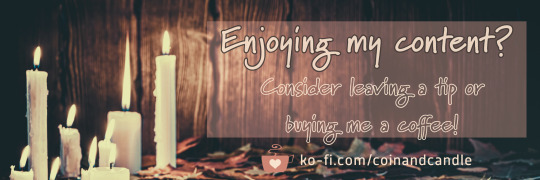
#the morrigan#deity deep dive#irish goddess#paganism#deity work#deity guide#witchcraft#grimoire#witchblr
995 notes
·
View notes
Text
The Morrigan
In this post I'm gonna talk about how Mor is going to be the High Queen.
So let's start.
The Morrígan or Mórrígan, also known as Morrígu, is a figure from Irish mythology. The name is Mór-Ríoghain in Modern Irish, and it has been translated as "great queen" or "phantom queen".
her name already goes as phantom queen or great queen.
In myths it is talked about Morrigan is described as a trio of individuals, all sisters.
The Morrígan is often described as a trio of individuals, all sisters, called "the three Morrígna". In mythology membership of the triad is given as Badb, Macha, and the Morrigan, who may be named Anand It is believed that these were all names for the same goddess. In modern sources Nemain may also be named as one of the three Morrigan along with Badb, Macha, although her inclusion is unclear The three Morrígna are also named as sisters of the three land goddesses Ériu, Banba, and Fódla. The Morrígan is described as the envious wife of The Dagda and a shape-shifting goddess, while Badb and Nemain are said to be the wives of Neit. She is associated with the banshee of later folklore.
So I went to look at those names. Macha is what we are going to focus on.
Macha was a sovereignty goddess of ancient Ireland associated with the province of Ulster, particularly the sites of Navan Fort (Eamhain Mhacha) and Armagh (Ard Mhacha), which are named after her. Several figures called Macha appear in Irish mythology and folklore, all believed to derive from the same goddess. She is said to be one of three sisters known as 'the three Morrígna'. Like other sovereignty goddesses, Macha is associated with the land, fertility, kingship, war and horses.
Macha is connected with horses. So is Mor. In acofas. The bridge book between the og trilogy and the new books.
And as Mor galloped over the snowy hills, her mare, Ellia, a solid, warm weight beneath her, she remembered why. Early-morning mist hung between the bumps and hollows of the sprawling estate. Her estate. Athelwood. She’d bought it three hundred years ago for the quiet. Had kept it for the horses.
also side not Athel means : noble; nobleman, hero...her estate is called Athelwoold.
Another thing about Macha is that she is the only high queen of Ireland.
Macha Mong Ruad ("red hair"), daughter of Áed Rúad ("red fire" or "fire lord" – a name of the Dagda), was, according to medieval legend and historical tradition, the only queen in the List of High Kings of Ireland.
and lastly...King of Hybern's words.
She froze. Stopped a foot from the throne. Her knife clattered to the floor. The king rose. “What a mighty queen you are,” he breathed. And Mor backed away. Step by step. “What a prize,” the king said, that black gaze devouring her.
this post is dedicated to @seerelain ✨
#the morrigan#high but make it queen#fuck patriarchy#mor is the next barbie#Prythian OUT#Barbie land IN#acotar theories#acotar#high king#high queen#Mor
51 notes
·
View notes
Text
The Morrígan
“Thou hast no power against me," said Cúchulainn.
"I have power indeed," said the woman; "it is at the guarding of thy death that I am; and I shall be," said she.
The Cattle-Raid of Regamna, from the Yellow Book of Lecan
The Morrígan is depicted in the Irish cycles as a member of the Tuatha Dé Danann, the wife* of the Dagda, and a goddess ruling over the spheres of fate, death, war, and land. She is often associated with ravens, crows, and heifers, whose forms she takes.
Name & Epithets: Morrígan, Morrígu, Mórrígan (Middle Irish— “Great Queen”), Mór-Ríoghain (Modern Irish)
Role as a Goddess of War
The Morrígan is seen in the Cycles as bringing victory in war, or foretelling death in battle. In the Cath Mage Tuired, which describes how the Tuatha Dé Danann overthrew the tyrannical Fomorians, she proclaims the victory of the gods over their enemy and foretells the end of the world. In the Ulster Cycle, she is the sometimes-patron, sometimes-enemy of the hero Cúchulainn, whose death she prophesies after he offends her, and then reminded of his fate by taking the form of an old woman washing his bloodied clothes in a creek.

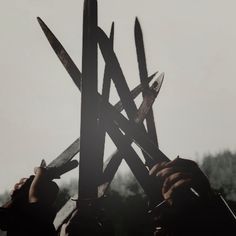
Role as a Sovereignty Goddess
Sovereignty goddesses in Irish tradition represent the land itself, and thus marriage to one creates a legitimate rule or guardianship over that land. In Early Medieval Ireland (and perhaps before), a king’s coronation would include a symbolic marriage to the land, thereby granting himself power and legitimacy. The Morrígan is one such sovereignty goddess, or at least perceived as one by the 12th Century, as the Book of Invasions names her the sister of Ériu, Banba, and Fódla, personifications of Ireland married to each of her three kings.

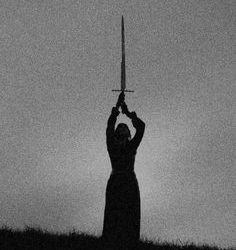
Role as a Triplicate Goddess
The Morrígan is inconsistently referred to as one of three or a combination of three figures. In the Mythological cycle, she is named as the sister of Badb (’crow’), a war goddess, and Macha, a land goddess. Together, they are called the three Morrígna. Macha is also the name of several other figures, and Badb appears barely distinguishable from the Morrígan. Whatever the case, the names appear less like the archetypal ‘Maiden, Mother, Crone’, and more like simply different aspects of the goddess given different titles, as is common in Irish religion.
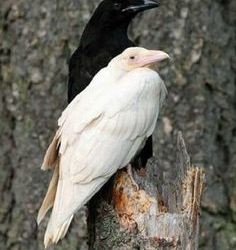
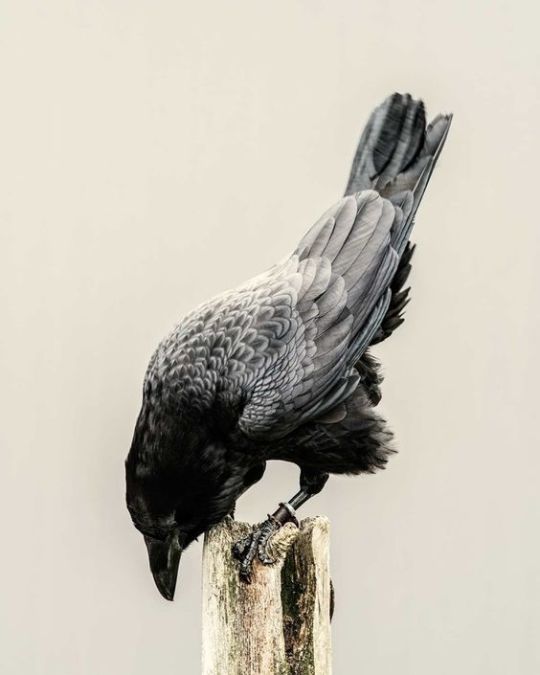
*Marriage with the Dagda
The fact of her “marriage” with the Dagda is contentious but well-supported by the texts we have access to. One of her best-known stories from the Cath Mage Tuired is the Dagda’s pact with her before the battle against the Formorians. This part of the text is often mistranslated as the Dagda meeting her [for the first time] at a certain point in the year, when really a perhaps more accurate translation would be “On this day [near Samhain] the Dagda met her yearly.” Additionally, the “union” described between her and the Dagda does not appear to be purely sexual. The word used, ‘oentaith’ is difficult to translate but probably also refers to a general agreement/pact [dil.ie/33541], not unlike a modern marriage. Additionally, as a king of the Tuatha Dé Danann, a ceremonial marriage to a sovereignty and agricultural goddess such as the Morrígan would be appropriate for the Dagda and make sense to an early Irish audience.
My UPG with the Morrígan
Recommended reading + Sources
Cath Mage Tuired [Translation] [Original]
Book of Invasions
The Cattle-Raid of Regamna
#morrigan#na morrigna#the morrigan#gaelic polytheism#irish polytheism#morrigan goddess#paganblr#celtic reconstructionism#morrigan deity
68 notes
·
View notes
Text

#morrigan#the morrigan#celtic gods#celtic god#celtic pantheon#celtic mythology#celtic paganism#wiccan#neo paganism#paganism#pagan#etsyseller#celtic goddess#witch#witchcraft#etsystore#etsyshop#etsyfinds#etsy#etsycanada#etsy shop#artists on etsy#shop small#goddess art
4 notes
·
View notes
Text


Name: Regan Moore
Species: Old God
Iteration of: The Morrigan
Faceclaim: Carla Gugino
Gender/Sexuality: Feminine Trinity | Fluid
How long have they been in Goodluck?: Since 1995
Occupation: Owner of Triskelion Dairy Farm
3 Character Traits: Assertive, Confident, Protective
Domain(s): Death, Fate, War
Previous Names and Epithets: Morrígu, Mór-ríoghan, The Morrígna, Warrior Queen, Phantom Queen, Queen of Nightmares
Background/History:
Rising from Irish folklore, the triple goddess is now most often associated with war, fate and death. A gifted shapeshifter, she both appeared to and was invoked by warriors before battle. She often appeared to test a favored mortal, to see if they were worthy of her arcane gift.
As mankind modernized, as Christianity spread, The Morrigan's power narrowed. No longer able to declare sovereignty, she has also lost her association with the fertility of Ireland.
In the 90s, the rise of new-age, divine feminine, paganism revitalized The Morrigan. She chased the power to America, settling in Goodluck, where a devout believer had called to her.
Now, her dairy farm lives and dies by the strength of belief in The Morrigan, inspiring her to hew to Old Gods.
Headcanons:
Shapeshifter, who can appear as women of various ages, an eel, a crow or even a cold wind.
Her dairy cattle are magic - a reference to one of her oldest legends. They need less feed, produce greater quantities of milk and can be used to transfer her blessing to a mortal.
Goes by both She and They - a reference to the various names & forms she took.
Becoming something of a goddess to witches is a newer phenomenon, but she's enjoying it.
Wanted Connections:
Summoner | A believer who pulled Regan to Goodluck back in 95. Human, more likely than not. (0/1)
Relationships
@lou-longhand : Dreamed of her the night before a battle & fled his fate. She cursed him for the defiance, and remains affronted by his cowardice to this day. Feels there is an older connection between them, but that memory has all but vanished across the years.
4 notes
·
View notes
Text
was tagged by @galeboettichergf to do oc name meanings, i could be normal about it and put like. one. but no i got a fuckton of oc icons that im itching to use so guess what's waiting under the cut.
BLOODBORNE -

gerard austeoire -
gerard - Old German origin, and the meaning of Gerard is "spear brave". From gâr, gêr "spear" and hard "brave, hardy, strong".
austeoire - like AUSTERE. austere adj. as in strict, given to exacting standards of discipline and self-restraint

sofia velance -
sofia - a Greek name meaning "wisdom."
velance - represents ambition, independence, strength, reliability, determination and professionalism.
CYBERPUNK 2077 -
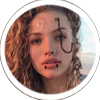
elizabeth "beth" marigold -
beth - of Hebrew origin, and the meaning of Beth is "house". Short form of Elizabeth (Hebrew) "God is my oath", Bethel and Bethany.
marigold - popular name of several plants with golden or bright yellow flowers, late 14c., marygolde, from Mary (probably a reference to the Virgin) + gold, for color. The Old English name for the flower was simply golde

vinita "cinco" vasquez -
vinita - Spanish, the meaning of Vinita is "vineyard".
cinco - the word for 'five' in spanish. in her case, the fifth Vasquez child, the last three numbers on her license plate, and even her name, Vinita Vasquez, V being 'five' in roman numerals.
vasquez - A name denoting one who came from the Basque country, from the words vasco, velasco and belasco, each suggesting a place or ethnicity in the Basque provinces of Spain. //or// A patronymic surname meaning "son of Vasco." The given name Vasco derives from the medieval Spanish name Velasco, which possibly meant "crow" in Basque. //or// According to Elsdon Smith in American Surnames, the names Vasquez, Vazquez and Velez in Spain "designate those who herded ewes or sheep.
HELLBOY -
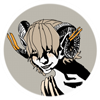
inaniel, the fallen angel -
inaniel - relating to the latin INANIS, meaning vain, Empty, void, inane, foolish, blind
MARVEL -

edith elliot -
edith - Old English origin, and the meaning of Edith is "strife for wealth".
elliot - Middle English Old French personal name Eliot a pet form of the Old Testament name Elijah rendered in Greek as Ēlias and in Old French as Élie + the diminutive suffix -ot; compare Ellis . The name Aylett may in some cases also have been confused with or absorbed into Elliott. Scottish: late variant of Elwood . Scottish (of Breton origin): perhaps as some members of the Elliott clan believe a Scottish variant of the Breton surname Elleouet a habitational name from one of the hamlets named Allegot in Finistère.

the morrigan -
the morrigan - The Morrígan or Mórrígan, also known as Morrígu, is a figure from Irish mythology. The name is Mór-Ríoghain in Modern Irish, and it has been translated as "great queen" or "phantom queen".
RESIDENT EVIL -
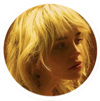
billie lane beckener -
billie - Old English origin. Originally a nickname for William. Now a feminine name, a short form for Wilhelmina (Old German) "will helmet, protection". Often combined with other names.
lane - The name Lane is primarily a gender-neutral name of English origin that means From The Lane.
beckener - related to surname BECKNER. The surname Beckner was first found in Prussia, where the name emerged in medieval times as one of the notable families of the region. From the 13th century the surname was identified with the great social and economic evolution which made this territory a landmark contributor to the development of the nation.

kseniya ignatyeva -
kseniya - Russian, Ukrainian and Belarusian form of Xenia, which means "hospitality" in Greek, a derivative of ξένος (xenos) meaning "foreigner, guest".
ignatyeva - daughter of ignatz
STRANGER THINGS -

nicole 'nickey' esther d'angelo
nicole - Greek, and the name means "people of victory"
esther - Persian origin, and the meaning of Esther is "myrtle, bride; star".
d'angelo - Italian: patronymic from the personal name Angelo. In Italy it is found chiefly in Naples and the south.
THE WITCHER -

chessa of stygga -
chessa - Slavic origin, and the meaning of Chessa is "at peace".
of stygga - hailing from Stygga, where the fortress used to create Cat Witchers once stood.
idk who to tag who hasn't already been tagged.... uhhh @shellibisshe @fizziefizzco @hex-dilfs @... anyone else?? once again, no pressure <3<3
#my ocs#tag game#shoutout to thinkbabynames.com for most of these#although i definitely got my ass kicked for stringing a bunch of letters together to make some of these surnames#my bloodborne ocs last names were keysmashes that looked kind of european let me be real
8 notes
·
View notes
Text
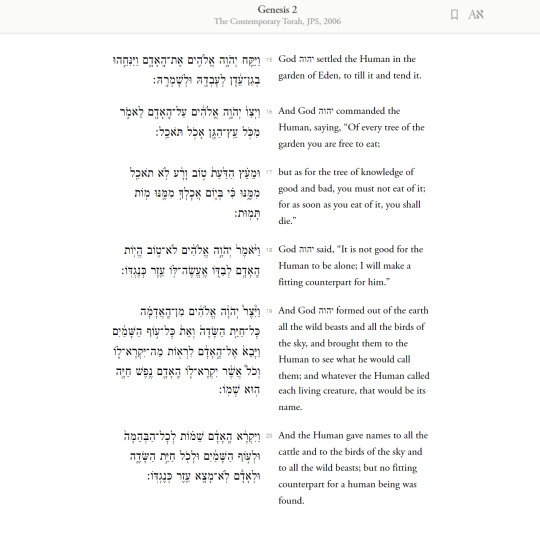


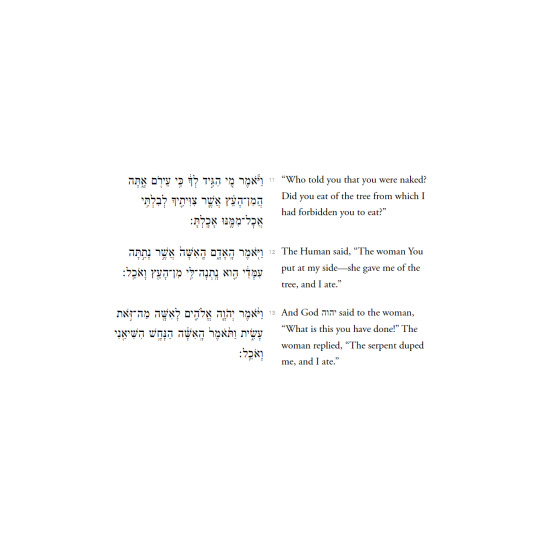
Day 20 of Jasmyne Ambrosia's 28 Day Witchy Challenge: Study A (Pagan) Creation Myth.
Even when I worshipped Ganapati as a "Hindu" wannabe and Eclectic NeoPagan; Ht-Hrt and Skhmt as Kemetic Recon; or an Cailleach, Brighid, na Morrigna (not just an Morrígu) as Irish Recon ... The story of Genesis has always held a bit of a soft spot in my heart.
Now that I'm a Noahide and NeoWiccan for whom Adam and Chava actually play a pivotal role in its faith, as the first Terrestrial Agrestal / Agrarian Ancestor Spirits of Humanity? Genesis' chapters 2 and 3 containing their creation story, the consumption of the Fruit from the Tree of the Knoweldge of Good and Evil, and their subsequent banishment from the Garden of Eden as a result, is easily the most important myth of my entire cycle.
I hate how most people treat it, however.
The creation of Chava is treated as "patriarchal nonsense that inherently puts women beneath men"; Adam gets called "a Patriarchal asshole who throws his wife under the bus to save himself"; and Chava gets pegged as "a woman escaping responsibility by blaming the snake".
That's not what I see when I read it, though ... When I read it, I see a story of love — Ahava.
I see a Deity who loved Adam, the first Human, so much that it created every animal on Earth for them in search of the right companion- and when that failed? Tried a new method of creation, creating another Human from Adam directly just to make them happy; I see a love and trust so perfect, that Chava wanted to give Adam the best- and so trusted the Serpent when it said the fruit was good and they wouldn't die; I see two people pushing their fear aside and taking the initiative to tell the truth (when they could've just lied now that they knew what a lie was) after experiencing shame and embarrassment for the first time, and realizing that yes, they would die now- but maybe not immediately.
I see the beginning — breishit — of a search to rebecome one with HaShem knowing that we can never again attain such a state of perfect innocence; but a love so powerful that we willingly spend our lives trying to anyways.
When I read Genesis, I see a two way street between HaShem and Humanity of beauty, and dedication, and commitment, and the true purity of love.
📖 Tanakh version: "The Contemporary Torah" by the Jewish Publication Society, published 2006; text provided by Sefaria
#I Have Very Strong Feelings About The Genesis Story And Chava's Creation And I'm Not Sorry For It#Chava / God the Mother / Lady#Adam / God the Father / Lord#Personal#2023#28DayWitchy#28DayWitchyChallenge#WitchChallenge#Instagram Reposts#Religion & Magic#Jewish Studies#Just Potential Jewish Convert Things#A Direct Look At My Practice
6 notes
·
View notes
Text
The Morrígan
The Morrígan or Mórrígan, also known as Morrígu, is a figure from Irish mythology.
Her name means "Great Queen" and she is worshiped primarily in England, Ireland, Wales and Brittany. Morrigan appears in the triple form of the great goddess. On the one hand she is the goddess who unites the three goddesses Anu as the blossoming goddess of fertility, Badb as the mother who constantly brings life out of her cauldron and the old woman and goddess of death Macha. On the other hand, she is also one of the three sisters Macha, Badb and Morrigan, or Nemain, Badb and Morrigan reported. Sometimes she is also mentioned as one of nine sisters (here there is a similarity to the Muses and to the Valkyries, because these were also their nine).
In any case, she was the one of the sisters most associated with magic. She guards all spells and curses. The Old English word "glamor" for spell comes from Morrigan's cult site of Glamorgan in Wales. She is thus the protector of priestesses and witches, the night, magic and the gift of prophecy. Morrigan is very similar to the alpine goddess Holla. Long worshiped as a wise, ancient mother goddess, she was gradually banished to the subterranean realms as a fierce death goddess, appearing only when someone was about to die. The fact that Morrigan was originally a mother goddess was suppressed. She probably goes back to the ancient Celtic goddess Rigani, who is considered the mother goddess. Also related to her is the Cymric Rhiannon.
Morrigan's ability to shapeshift is an important part of her magic. She appears as a beautiful young and seductive woman as well as an ugly old woman. Or she swings into the air like her sisters in the shape of a crow or a raven. She is also often described as "old aunt", especially in her function as the mistress of the battlefield. She can also transform into a snake to view the battle from this perspective. Sometimes she was also seen as a red cow. The dark aspect of the goddess as we find strong in Morrigan may require some reflection. Of course, Morrigan is dark, but not all dark is evil. Associating evil with her is very narrow-minded, to say the least.
Morrigan also appears in the guise of the harbinger of death (the old woman) and the guise of the goddess of war (the great raven). On the other hand, she is also known as the goddess of fertility (virgin huntress) and goddess of the moon, which is constantly changing from new to full moon and back. All of these aspects are inextricably linked. Morrigan is the goddess of the night and shadows — what scares many people. But she's not evil, just a part of the whole, and not a bad one at all. Anyone who has plunged into the darkness of the night after a long hot summer day knows how good it can be. And who doesn't seek the protection of the shade in bright light. People who are in the limelight a lot enjoy the retreat. It is therefore nonsensical to classify light and dark as good and bad.
The goddess Morrigan is often associated with Morgaine le Fay, Morgane, Morgana or Modron. It may be that the goddess transformed into this mythical figure, King Arthur's sister, for some time in the Middle Ages. In the 12th century, Morgana is mentioned in the Latin Vita Merlini as the eldest of nine sisters ruling "The Happy Isles" or "The Apple Islands". Relationships, especially in their manifestation as Fata Morgana, also exist to the Roman goddess Fatua, from whom the fairies also originate (here the connection to Morgaine le Fay is also nice to note) and to the Arabian mother goddess Fatima. As the high priestess of Avalon, the holy and enraptured island of women, Morgaine le Fay, like the goddess Morrigan, is ascribed strong magical powers and prophetic gifts. She is mentioned as a healer, as well as one who could transform into different forms. Her name has been associated as a mirage with anything magical, mysterious, or misleading. Specifically as Morgaine le Fay, the goddess is also particularly associated with the element of water. She is the "Lady of the Lake", protects holy springs and the sea. Water spirits are still called morgans in Britain today. She is also said to have found the Holy Grail that everyone was so eagerly searching for. The “dark side” of the legendary character Morgain is particularly well known. She is also referred to as the "winter goddess of darkness and death" and is thus the antagonist of Arthur, the "ruler of summer". On the other hand, there is her symbol, an apple branch, a symbol of peace and abundance.
Associations
Colors: Black, Red
Moon Phases: New, Waning
Trees: Aspen, Juniper, Oak, Willow
Herbs: Dragon Blood, Rose, Cedar
Crystals: red Agate, Bloodstone, Obsidian, Onyx, Ruby
Birds: Crow, Crane, Raven
Animals: Dogs, Horse, Wolf
Intentions and Power:
action, banish, battle, courage, death, defense, destiny, hexes, magic, nightmares, power, strength, revenge

11 notes
·
View notes
Text
Well, hello, there.
I am The Great One. The Lady of Crows. The Phantom Queen. The Great Queen Goddess.
I am Mór Ríoghan. I am Morrígu. I am Morgan le Fay.
But you might know me as "the Morrigan."
It's nice to meet you.
(Mod: Ciaran; 25; she/her, he/him)
Important Posts (links will be added in time)
Regarding Amalgam
Rules
Tags
Ask Memes
My other blogs
@ask-the-anomalous-linguist
@ask-dr-t-mason
@trinity-oakley
@o5-the-progeny
@amidst-peace-and-chaos
@ask-rancher-eirian
@cam-ventura
@felicity-xavier
21 notes
·
View notes
Text
Heads up. Seven up.
Thank you so much for tag, @writingpotato07 and @jessica-writes22. I love both of yours so much.
This is from my untitled WIP about a Dullahan and the goddess Morrigan. Much longer than 7 sentences lol.
cw: violence. death. injury
Now! Her muscles coiled as she prepared to leap from the brush. She fantasized about his blood splashed across her maw and her teeth ripping at his neck. He would finally realize how much of a mistake he made that night. His bronze sword's blade glimmered like heated copper in the pale light. This man was still so beautiful to her. She didn't move. Had she grown weak? Her hesitation was her undoing.
The man saw her and prepared himself for her attack. He bared his teeth at her. He shouted, no doubt trying to frighten her away. It might have worked with any other wolf, but not with her. She stared at him, jaws open, snarling, and he stared at her, the glint of metal in his raised hand. Neither one of them seemed to want to make the first move.
In the next moment, she leaped toward him. He tried to defend, but she was faster, and her fang sank into the soft flesh of his neck. She growled as she tried to twist her neck. His arm flailed, and pain erupted in her side, again and again. He was stabbing her with the knife, trying to make her let go. With the last swing, his hand caught the medallion hanging around her neck, and the chain broke. The medallion fell to the ground and her true form was revealed as they both collapsed into the leaf litter.
She lay prone on the leafy bed, her blood spilling out around her, like a giant wing of dead. Would it deliver her to the afterlife? She had never died before. The moonlight cascaded down upon them. Her hair lay sprawled out over his arm as he cradled her to him. Now, her strong Gaelic hunter cared more about her than the wound she cast upon his flesh. It mirrored their first meeting as he tried to staunch the bleeding of the person he thought she was. His blood marred her muzzle. Even in her rasping breathing, his thick blood choked her, flowing down her throat.
His blood — sanguine with sticky specks of black — dripped from his shredded neck and plopped onto her naked flesh, pooling into a macabre river upon her left breast. All she could see was the fear in his eyes, the terror as he realized who she finally was, and the gravity of what he done sunk in. He gargled one word: her correct name. She could make out the words in his painful hiss. Morrígu. In her last moments, she cursed the name.
One-Shot Stories Tag List
@asomeoneperson @jessica-writes22 @athenswrites @elijahrichardwriteshrichardwrites @whimsyqueen @arrthurpendragon @blind-the-winds, @fearofahumanplanet, @365runesofpassion @midnight-and-his-melodiverse @bookish-galaxy
If you would like to be on my tag list for notifications on any drabbles or short stories I might post to my Tumblr, check out this post here. If you wish to be taken off this taglist, feel free to tell me!
12 notes
·
View notes
Text
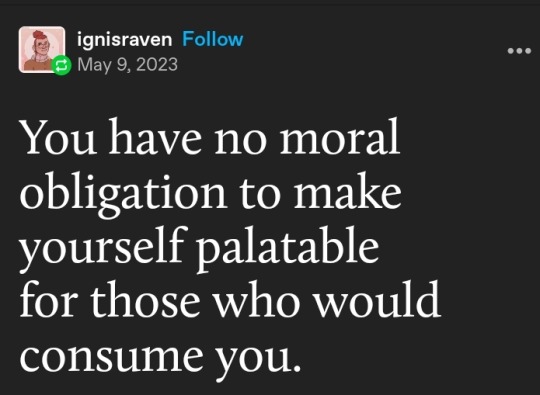
12 notes
·
View notes
Text
Dutch Experts
Morrígu
2 notes
·
View notes
Text
Defending the Afghan People: The Morrigan's Insight



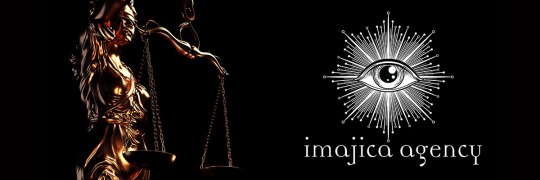


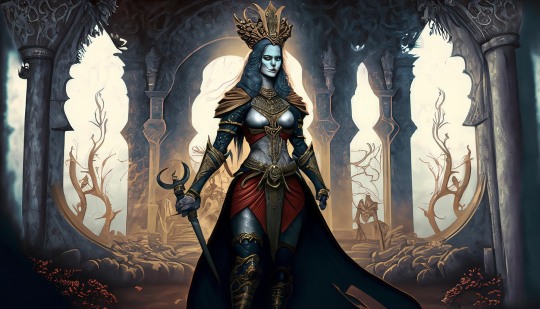





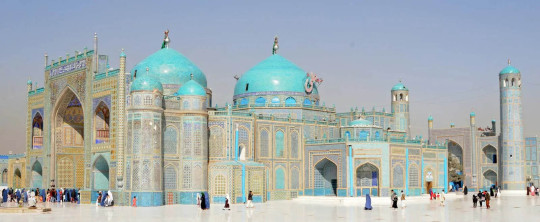
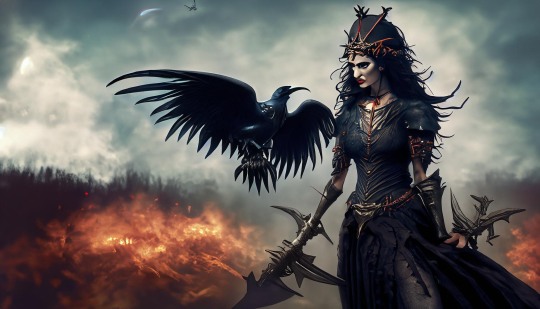

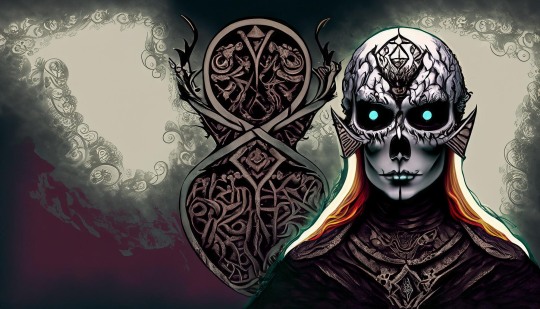

Defending the Afghan People: The Morrigan's Insight
The Celtic Society: The Morrigan ‘The Phantom Queen, Destroyer’ - Oracle: Andrew Rogers.
“Superb is the actions of and from Andrew Rogers to secure the rights and defend the Afghan people against the Taliban and the Supporters and those of who placed the Taliban in position of authority in Afghanistan which has serious threat implications towards the Afghan People and the surrounding regions” - The Morrigan ‘The Phantom Queen, Destroyer’.
The Morrigan ‘The Phantom Queen, Destroyer’ expresses deep concern for the well-being of the Afghan people and the potential threats posed by the Taliban and their supporters. In recognizing Andrew Rogers' efforts to secure rights and defend the Afghan population, The Celtic Society aims to address the serious implications that the Taliban's authority may have on the safety and stability of Afghanistan and its neighboring regions.
The Morrígan: A Mysterious Figure of Irish Mythology
The Morrígan, also known as Mórrígan or Morrígu, is a captivating and enigmatic figure from Irish mythology. Her name, Mór-Ríoghain in Modern Irish, has been translated as “great queen” or “phantom queen”, reflecting her multifaceted and powerful nature.
In ancient tales, she appears as a goddess embodying sovereignty, fate, and war. The Morrígan is often depicted as a shape-shifter, capable of transforming into various forms, including a crow. This connection to the mysterious and often misunderstood bird has added to her aura of otherworldly power.
As a deity associated with fate, the Morrígan is said to have the ability to predict and influence the outcomes of battles, making her a revered yet feared presence on the battlefield. She is also closely linked to the concept of sovereignty, playing a significant role in the coronation rituals of ancient Irish kings.
Intriguingly, the Morrígan is not a standalone figure but is part of a trio of goddesses known as the Morrígna. Alongside Badb and Macha, she forms a trinity of powerful and complex female entities, each contributing unique characteristics to the group.
Throughout Irish mythology, the Morrígan's influence is far-reaching, as she interacts with prominent heroes and plays a pivotal role in shaping the destinies of both individuals and kingdoms. Her enigmatic nature and the depth of her impact make her a captivating and essential figure within the rich tapestry of Irish folklore and legend.
Imajica Agency
Andrew Rogers: Founder, Justice Auteur, Creative Director, Writer, Oracle
All images, text, design, and art license owner Andrew Rogers©.
#justice#inspiration#military#mesopotamia#aesthetic#anime and manga#art#beauty#autos#imajica#SuperbActions#AndrewRogers#SecureTheRights#DefendAfghanPeople#TalibanSupporters#CelticGoddess#AfghanJustice#MotivationInspiration#OracleJustice#ImajicaAgency#TheMorrigan#Morrigan#Celtic#Celt#Irish#TheCelticSociety#CentreofCelts#Goddess#Justice#Motivation
0 notes
Text
Me naming cats:
"Your name is Licorice"
"Your name is Twizzler (off-brand Licorice)"
"Your name is Bastard."
"your name is Morrígu, Irish Goddess(es) of Death and Fate."
"And your name is Magpie."
0 notes
Text
An open letter with many recipients
Thank you, Thor, for being a kind presence in dark times.
Thank you, Morrígu, for teaching me not to assume I know everything.
Thank you, Freyja, for sending signs to me.
Thank you, Odin, for helping pull me away from “New Age” poison.
Thank you, Belisama, for showing me that it’s okay to have shifting hyperfixations.
Thank you, Hel, for telling me it’s not my time to leave this realm.
1 note
·
View note